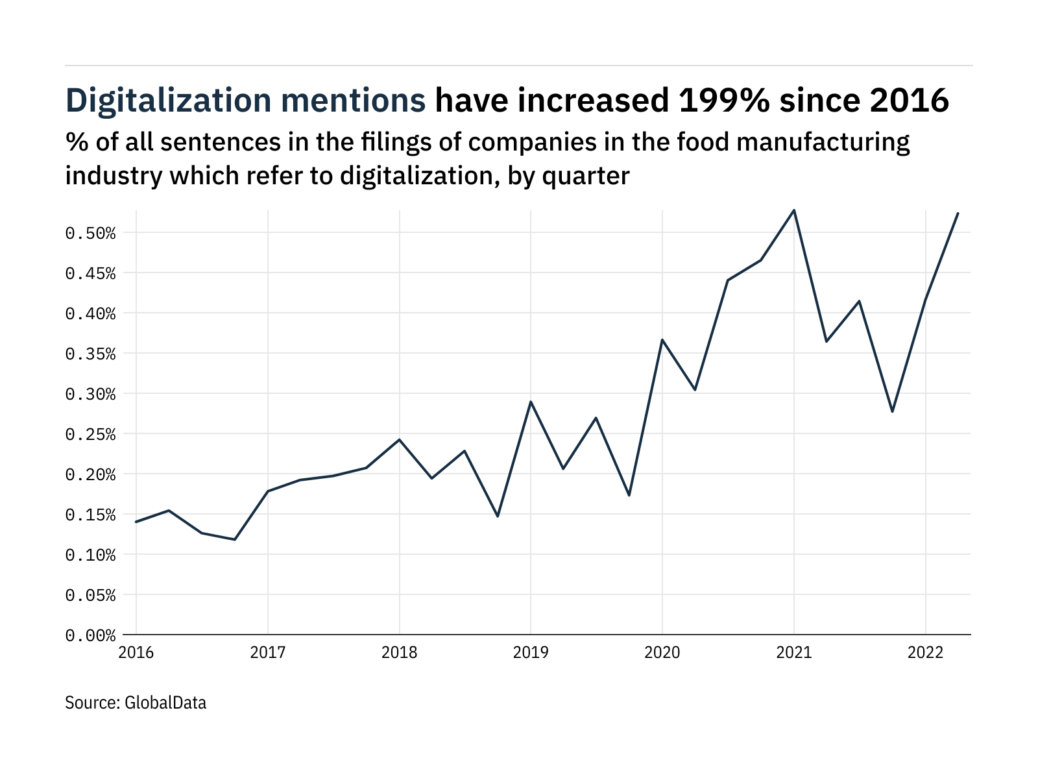
Mentions of digitalisation within the filings of companies in the food manufacturing industry were 44% higher in the second quarter of 2022 than in Q2 of 2021.
In total, the frequency of sentences related to digitalisation between July 2021 and June 2022 was 199% higher than in 2016 when GlobalData, Just Food‘s parent, first began to track the key issues referred to in company filings.
When food manufacturers publish annual and quarterly reports, ESG reports and other filings, GlobalData analyses the text and identifies individual sentences that relate to disruptive forces facing companies in the coming years. Digitalisation is one of these topics – companies that excel and invest in these areas are thought to be better prepared for the future business landscape and better equipped to survive unforeseen challenges.
To assess whether digitalisation is featuring more in the summaries and strategies of food manufacturing companies, two measures were calculated. Firstly, GlobalData looks at the percentage of companies that have mentioned digitalisation at least once in filings during the past twelve months – this was 78% compared to 44% in 2016. Secondly, GlobalData calculates the percentage of total analysed sentences that referred to robotics.
Of the ten biggest employers in the food manufacturing industry, Nestle was the company that referred to digitalization the most between July 2021 and June 2022. GlobalData identified 100 digitalisation-related sentences in the Switzerland-based company’s filings – 1.8% of all sentences. Unilever mentioned digitalisation the second-most – the issue was referred to in 1.2% of sentences in the company’s filings. Other top employers with high digitalization mentions included PepsiCo, Grupo Bimbo and Itochu.
Across all food manufacturing companies, the filing published in the second quarter of 2022 which exhibited the greatest focus on digitalisation came from ITC. Of the document’s 5,723 sentences, 107 (1.9%) referred to digitalisation.
In the last quarter, food manufacturing companies based in Asia were most likely to mention digitalisation with 0.63% of sentences in company filings referring to the issue. In contrast, companies with their headquarters in the US mentioned digitalisation in just 0.29% of sentences.
This analysis provides an approximate indication of which companies are focusing on digitalisation and how important the issue is considered within the food manufacturing industry, but it also has limitations and should be interpreted carefully. For example, a company mentioning digitalisation more regularly is not necessarily proof that they are utilising new techniques or prioritising the issue, nor does it indicate whether the company’s ventures into digitalisation have been successes or failures.



